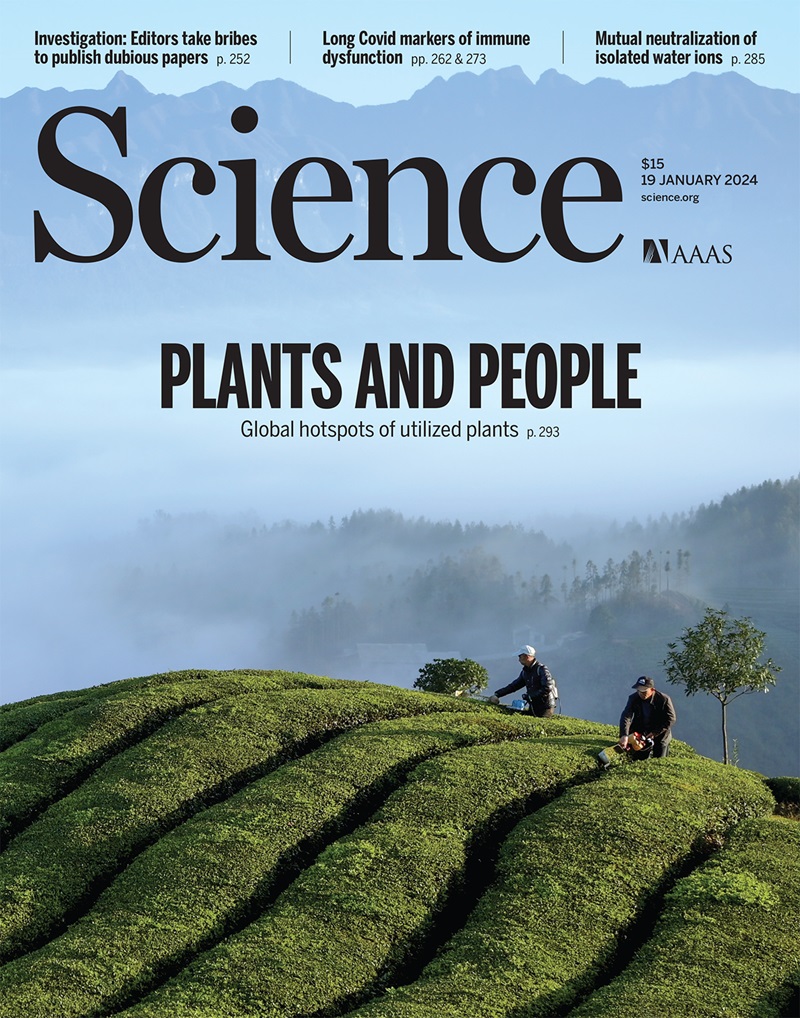Sequence modeling and design from molecular to genome scale with Evo
IF 44.7
1区 综合性期刊
Q1 MULTIDISCIPLINARY SCIENCES
引用次数: 0
Abstract
The genome is a sequence that encodes the DNA, RNA, and proteins that orchestrate an organism’s function. We present Evo, a long-context genomic foundation model with a frontier architecture trained on millions of prokaryotic and phage genomes, and report scaling laws on DNA to complement observations in language and vision. Evo generalizes across DNA, RNA, and proteins, enabling zero-shot function prediction competitive with domain-specific language models and the generation of functional CRISPR-Cas and transposon systems, representing the first examples of protein-RNA and protein-DNA codesign with a language model. Evo also learns how small mutations affect whole-organism fitness and generates megabase-scale sequences with plausible genomic architecture. These prediction and generation capabilities span molecular to genomic scales of complexity, advancing our understanding and control of biology.
利用 Evo 进行从分子到基因组规模的序列建模和设计
基因组是编码 DNA、RNA 和蛋白质的序列,它们协调着生物体的功能。我们介绍的 Evo 是一种长语境基因组基础模型,其前沿架构是在数百万个原核生物和噬菌体基因组上训练出来的,并报告了 DNA 的缩放规律,以补充语言和视觉方面的观察结果。Evo 可在 DNA、RNA 和蛋白质之间进行泛化,实现了与特定领域语言模型竞争的零射频功能预测,并生成了功能性 CRISPR-Cas 和转座子系统,这是利用语言模型进行蛋白质-RNA 和蛋白质-DNA 编码设计的首个实例。Evo 还能了解微小突变如何影响整个生物体的适应性,并生成具有可信基因组结构的巨碱基序列。这些预测和生成能力跨越了从分子到基因组的复杂尺度,促进了我们对生物学的理解和控制。
本文章由计算机程序翻译,如有差异,请以英文原文为准。
求助全文
约1分钟内获得全文
求助全文
来源期刊

Science
综合性期刊-综合性期刊
CiteScore
61.10
自引率
0.90%
发文量
0
审稿时长
2.1 months
期刊介绍:
Science is a leading outlet for scientific news, commentary, and cutting-edge research. Through its print and online incarnations, Science reaches an estimated worldwide readership of more than one million. Science’s authorship is global too, and its articles consistently rank among the world's most cited research.
Science serves as a forum for discussion of important issues related to the advancement of science by publishing material on which a consensus has been reached as well as including the presentation of minority or conflicting points of view. Accordingly, all articles published in Science—including editorials, news and comment, and book reviews—are signed and reflect the individual views of the authors and not official points of view adopted by AAAS or the institutions with which the authors are affiliated.
Science seeks to publish those papers that are most influential in their fields or across fields and that will significantly advance scientific understanding. Selected papers should present novel and broadly important data, syntheses, or concepts. They should merit recognition by the wider scientific community and general public provided by publication in Science, beyond that provided by specialty journals. Science welcomes submissions from all fields of science and from any source. The editors are committed to the prompt evaluation and publication of submitted papers while upholding high standards that support reproducibility of published research. Science is published weekly; selected papers are published online ahead of print.
 求助内容:
求助内容: 应助结果提醒方式:
应助结果提醒方式:


